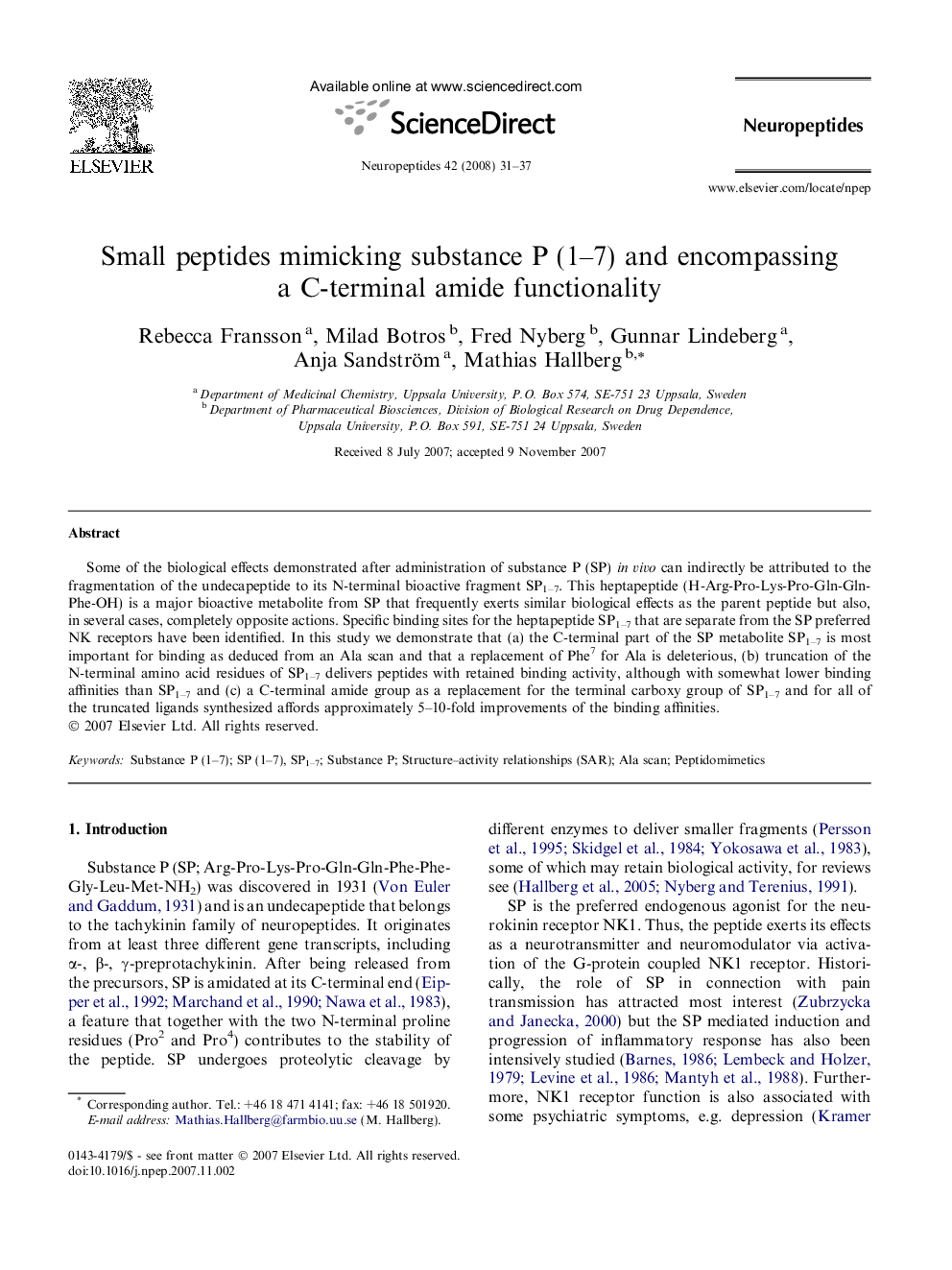| Article ID | Journal | Published Year | Pages | File Type |
|---|---|---|---|---|
| 2808318 | Neuropeptides | 2008 | 7 Pages |
Some of the biological effects demonstrated after administration of substance P (SP) in vivo can indirectly be attributed to the fragmentation of the undecapeptide to its N-terminal bioactive fragment SP1–7. This heptapeptide (H-Arg-Pro-Lys-Pro-Gln-Gln-Phe-OH) is a major bioactive metabolite from SP that frequently exerts similar biological effects as the parent peptide but also, in several cases, completely opposite actions. Specific binding sites for the heptapeptide SP1–7 that are separate from the SP preferred NK receptors have been identified. In this study we demonstrate that (a) the C-terminal part of the SP metabolite SP1–7 is most important for binding as deduced from an Ala scan and that a replacement of Phe7 for Ala is deleterious, (b) truncation of the N-terminal amino acid residues of SP1–7 delivers peptides with retained binding activity, although with somewhat lower binding affinities than SP1–7 and (c) a C-terminal amide group as a replacement for the terminal carboxy group of SP1–7 and for all of the truncated ligands synthesized affords approximately 5–10-fold improvements of the binding affinities.
